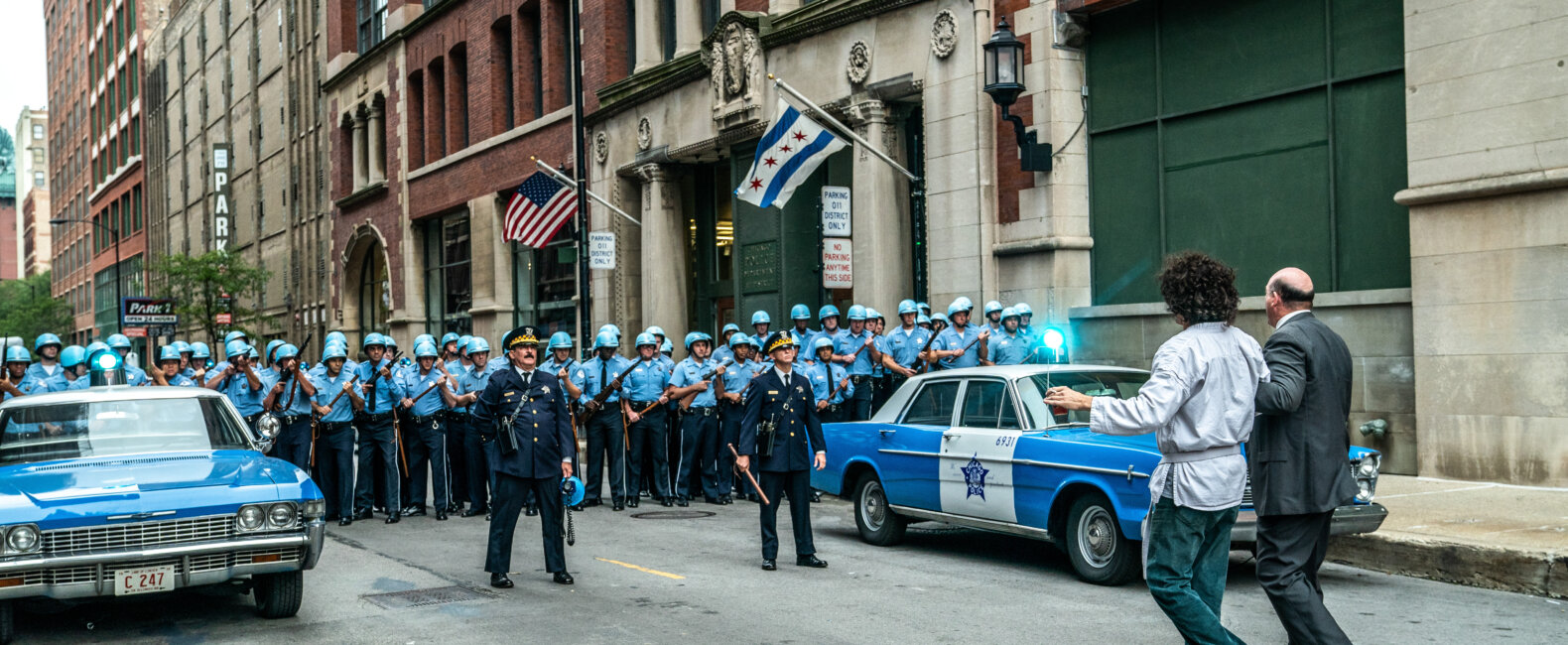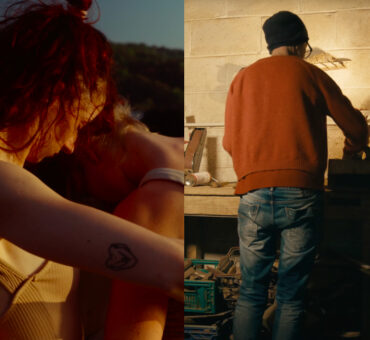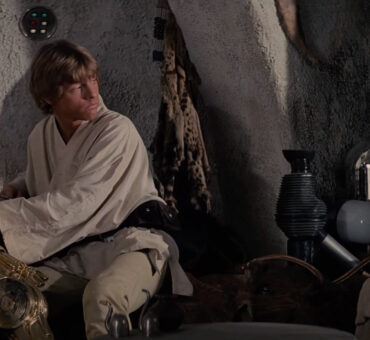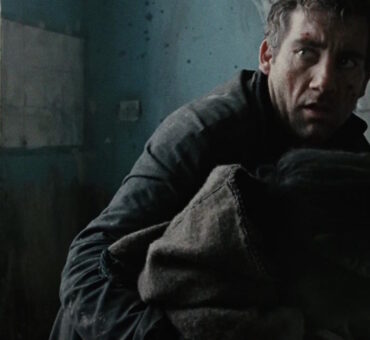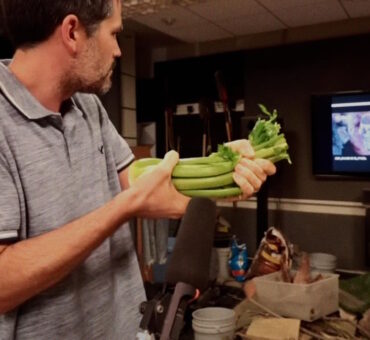Until very recently, 1968 was widely regarded as the most tumultuous year in modern American history. With multiple assassinations, racial tensions run amuck and at least one international act of piracy, the country seemed ablaze with dissent and discontent. Many of these tensions came to a boil at The Democratic National Convention in Chicago. Peaceful protestors were brutally routed by a police force unleashed by the city mayor, and the government charged some activists for being responsible for the uprising. The resulting trial is the subject of Netflix’s The Trial of the Chicago 7, written and directed by Aaron Sorkin.
Sorkin chose Phedon Papamicheal, ASC, as his cinematographer. The DP started out in photojournalism before segueing into filmmaking. In addition to earning an Oscar nomination for his work on Chicago 7, Pheodon has been nominated for his work on Nebraska in collaboration with Alexander Payne and recently worked with James Mangold on Ford v Ferrari. An authority on the subject, we recently spoke with Phedon about capturing a period picture in a way that feels fresh and authentic.
Musicbed: After Ford Vs. Ferrari, was doing another period picture an easy call for you to make?
Phedon Papamichael: Both projects were set in the 60s and I did them back to back, going from color-correction on Ford right into prep on this. But Chicago 7 couldn’t be more different. We weren’t flying round a track at 100mph. Instead we spent sixty percent of the runtime inside a courtroom.
Is it difficult to sustain visual interest inside a courtroom?
Making that interesting was a significant challenge, though we were helped by how Aaron’s script cuts in and out of the courtroom throughout. So there weren’t huge blocks of time there in a single static locale. Plus, since the trial takes place over the span of months, I could alter the look of things slightly to reflect distinct times of year and times of day, which let me play different moods in the courtroom. We built it in an abandoned Paterson, New Jersey schoolhouse, and were there for twelve days.
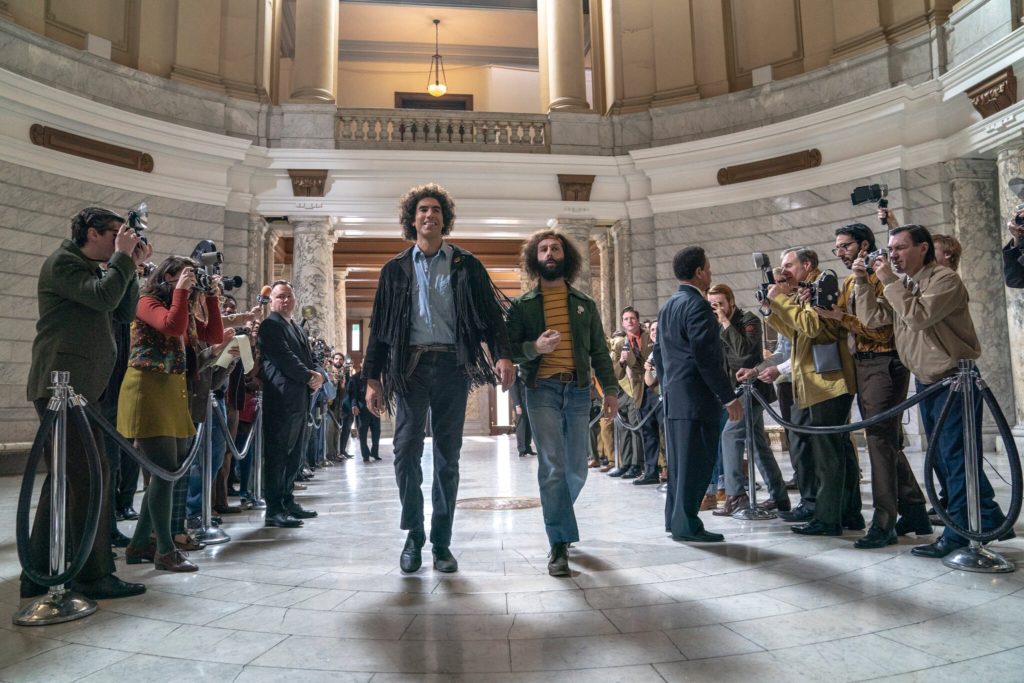
Can you discuss your camera/lens choices?
On Ford, I had wanted to shoot large-format and anamorphic, but the 2X expanded Panavision T-series anamorphic lenses didn’t cover the larger sensor. Panavision’s Dan Sasaki tried expanding them with prototypes that added a rear element to the older C- and T-series, and that carried over to this film. In fact, the approach proved so successful that sixty percent of Panavision anamorphics now cover the sensor on Alexa LF larger-format cameras.
Were your courtroom lighting choices character motivated?
I played two parts of the trial with hard light and direct beams. One on the opening day, because there’s a sense of hope at this Academy Awards of trials. One character even says, ‘I’m just happy to be nominated.’ Then the second was at the end of the trial, before sentencing. The Hayden character, who is already in his prison outfit, stands up and reads the names of those who had fallen in Vietnam. I felt he should be bathed in light, engulfed in this heroic, angelic light, to convey a sense of truth and show there was freedom in his being able to express what mattered to them all so much.
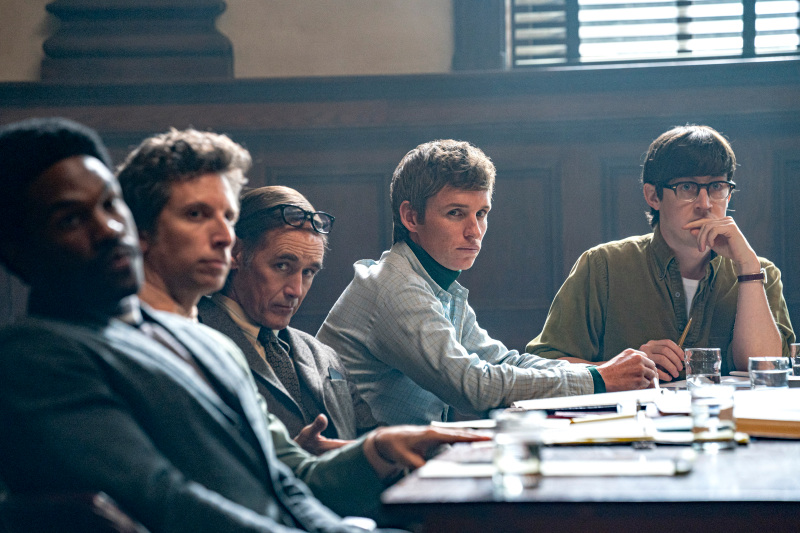
How did you control the light coming through the two big windows in the courtroom?
We built a tent [30’ deep, 50’ wide, 30’ high] outside that served as a gigantic lightbox. I had lighting units installed there that let me switch over very quickly from direct sunlight – 18K ArriMaxs and M90s — to overcast cloudy days and even moodier rain conditions. I could change color temperatures with Arri S60 SkyPanels. That flexibility was very important to make the schedule since we were bloc-shooting scenes based on actor availability.
With so many principal characters, did you use multiple cameras throughout?
We ran three cameras a lot of the time, though I initially asked for four. In conversation with editor Alan Baumgarten, he was always asking for more reaction shots.
Aaron doesn’t think as much about coverage. For him it’s all about the language. He mainly just wants the camera on whoever is speaking. He doesn’t want elaborate tracking moves or crane shots getting in the way of the rhythm of the dialog. For instance, he originally suggested using long lenses. But I felt closeups using wider lenses – which I’d done on my Mangold work going back to 3:10 to Yuma – was preferable. Having the camera closer to the character makes you feel you are right there with him.
Having so many static setups, I thought more in terms of classical framing. But I remained very cognizant of the widescreen format, and that let me tie characters into their environment.
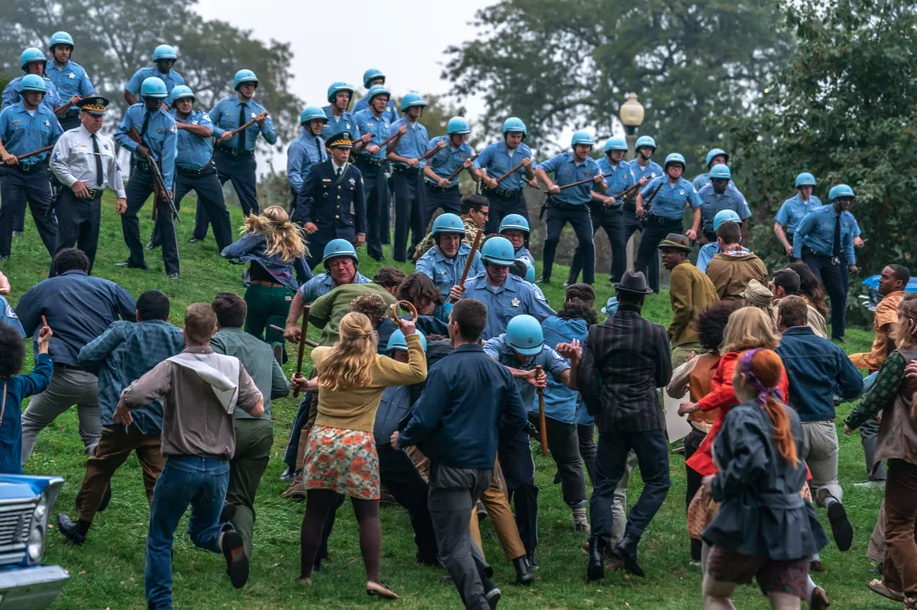
What was it like to restage the start of the riot?
We got to shoot in the actual Graham Park. So when they yell, ‘Take the hill,’ we are right there where that happened, with the same geography. It was helpful to have stock footage of the actual event. There was also footage from Medium Cool transformed to black-and-white sprinkled in. What we shot wasn’t intended to emulate the stock, as it was all shot anamorphic; it was more about the kinetic movement and energy of the protestors and the police in combat.
I sent my camera operators out with the direction to just make it documentary-like. What made that tough was that we had — at most — 200 people. When originally there were 10,000 protestors and who knows how many police officers at the actual riot. Plus, camera-wise, we are really immersed into the crowd rather than standing back and trying to shoot a big spectacle.
We were helped when it came time to recreate the tear-gassing. The smoke levels helped hide the fact we weren’t back in 1968. Fortunately a lot of the architecture is still the same, too, so there wasn’t a ton of VFX needed.
How did you address period lighting on the interiors?
The defendants are often seen at night in what we called the conspiracy room. I spent a while with production designer Shane Valentino, finding lights that gave us the period look and the proper mood for these night scenes. Those were played warmer and more tungsten-y. I’d supplement those practicals with very tiny LED panels, small SkyPanels and tungsten bounces. But that was very minimal, so as to keep it looking the way I wanted: very natural.
Doing this movie in 36 days for $20 million sounds like a very tight proposition. Did you have everything boarded and preplanned?
No. Aaron would arrive in the morning, tell everybody to have a seat, and then they’d read the pages. Once he made sure the rhythms were right, he’d ask if I was good, then leave. I’d place the actors, suggesting where they might want to stand. Then I would call script supervisor Shane Scott to take note as I dictated the day’s shotlist.
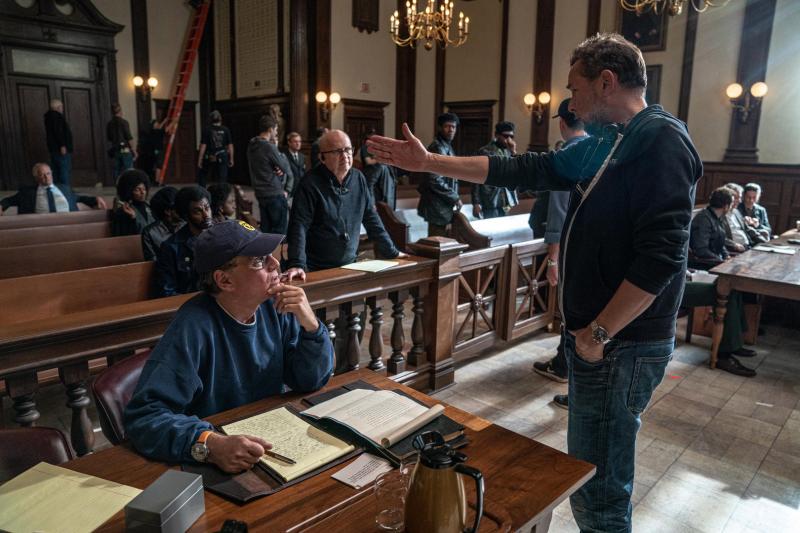
Did COVID alter your post-work?
Initially the thought was I’d sit in with colorist Skip Kimball at Company 3, but then lockdown happened. At first we considered a separate room in L.A; I had done Nebraska remotely from London, with Skip in L.A. But even getting to London was going to be an issue, so I ended up doing it from my house in Greece.
When Netflix bought the film from Paramount, it made things a little easier for us, since we focused on the HD version. I had tried an OLED panel purchased locally for my review from home, but there were calibration issues. We weren’t comparing apples with apples. I found this local facility with a capability to render through Streambox instead of me having to open my iPad. Streambox let me share and dial things in remotely.
How involved was Aaron during this process?
I’ve worked with Gore Verbinski and David Fincher who, like Mangold, maintain a certain visual standard in their films regardless of the DP involved. Mangold is always in the room for DI and very concerned about contrast and saturation. Aaron was not so technically-focused. Very much the opposite. He wasn’t involved beyond reviewing the final and saying, ‘It looks great!’ I did finally see the movie — on my computer [laughs]. My job is mainly to augment the vision, and I think my intentions translated successfully.
Read our conversation with Paul Cameron, ASC on partnering with Westworld creators to build a world set in 2058.















































































